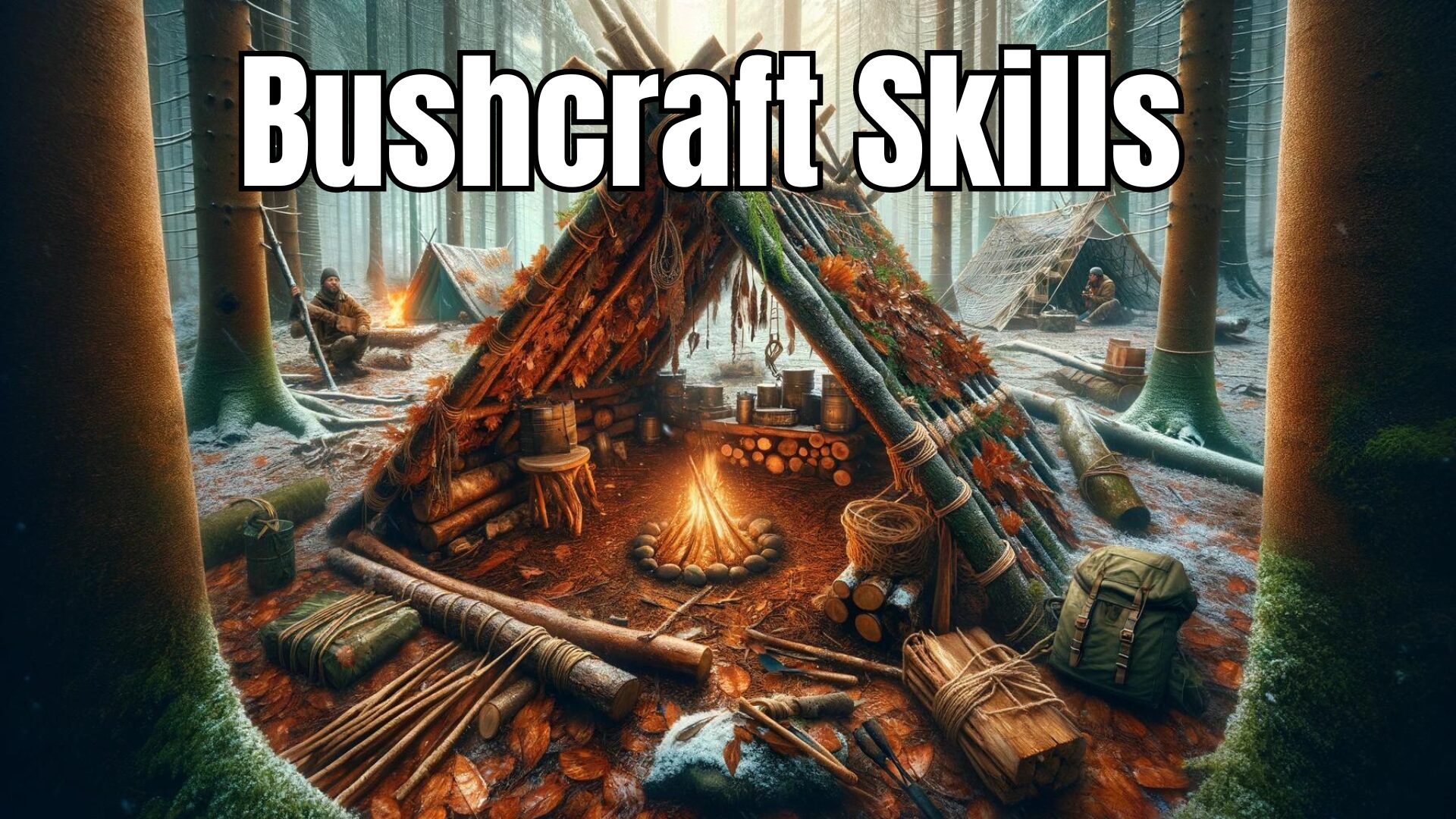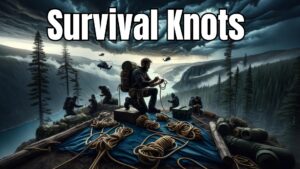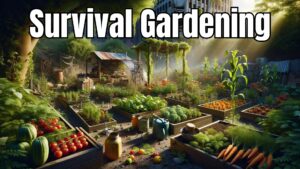Embarking on an adventure in the wilderness requires more than just courage; it demands the essential skills to ensure survival and safety.
This guide is tailored to equip you with the knowledge and techniques to construct a robust haven, ensuring your outdoor escapades are both thrilling and secure.
Table of Contents
1. Building Effective Bushcraft Shelters
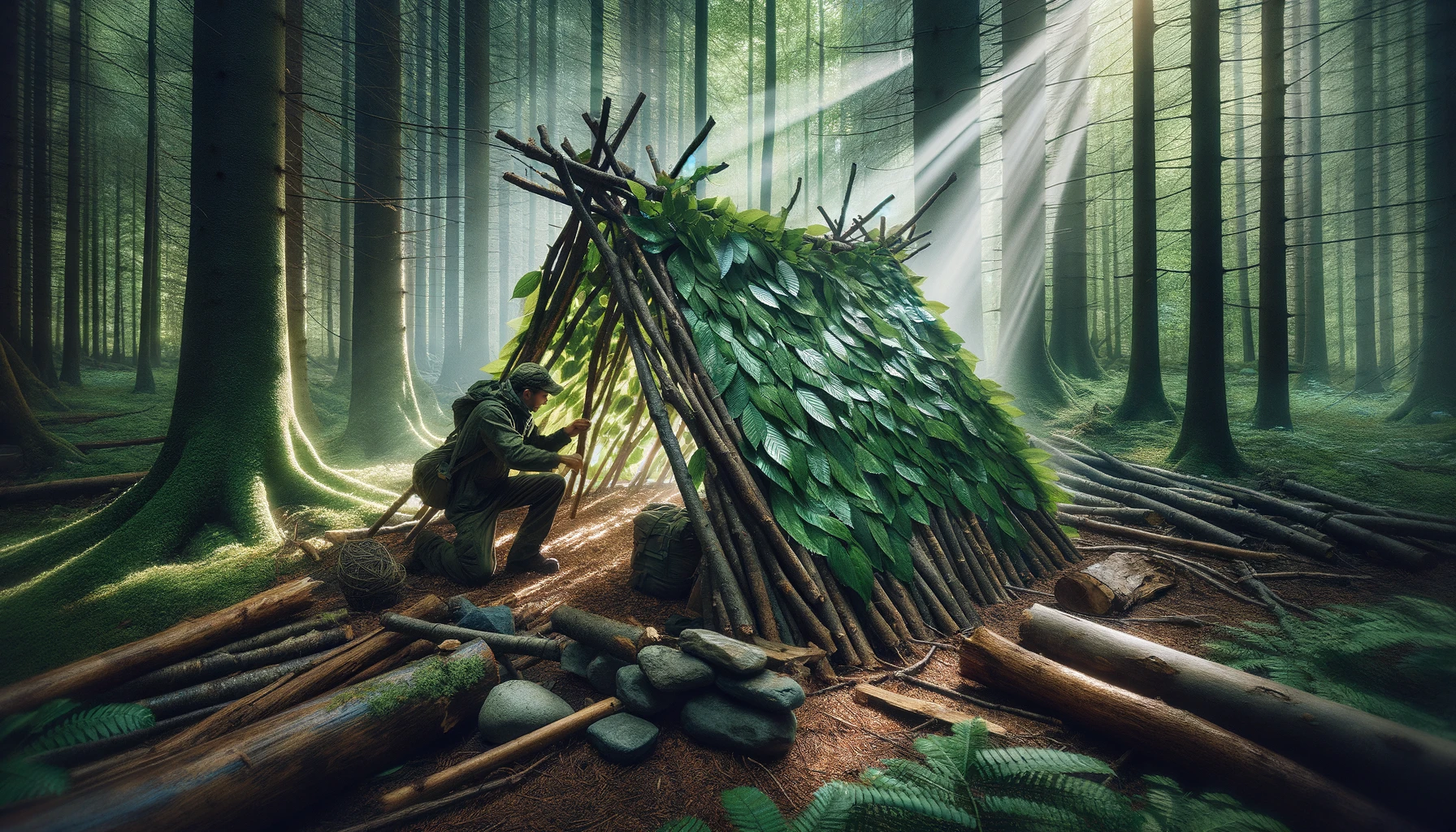
Essential Bushcraft Skill: Building a Sturdy Shelter
One of the most crucial bushcraft skills for survival in the wilderness is the ability to build an effective shelter.
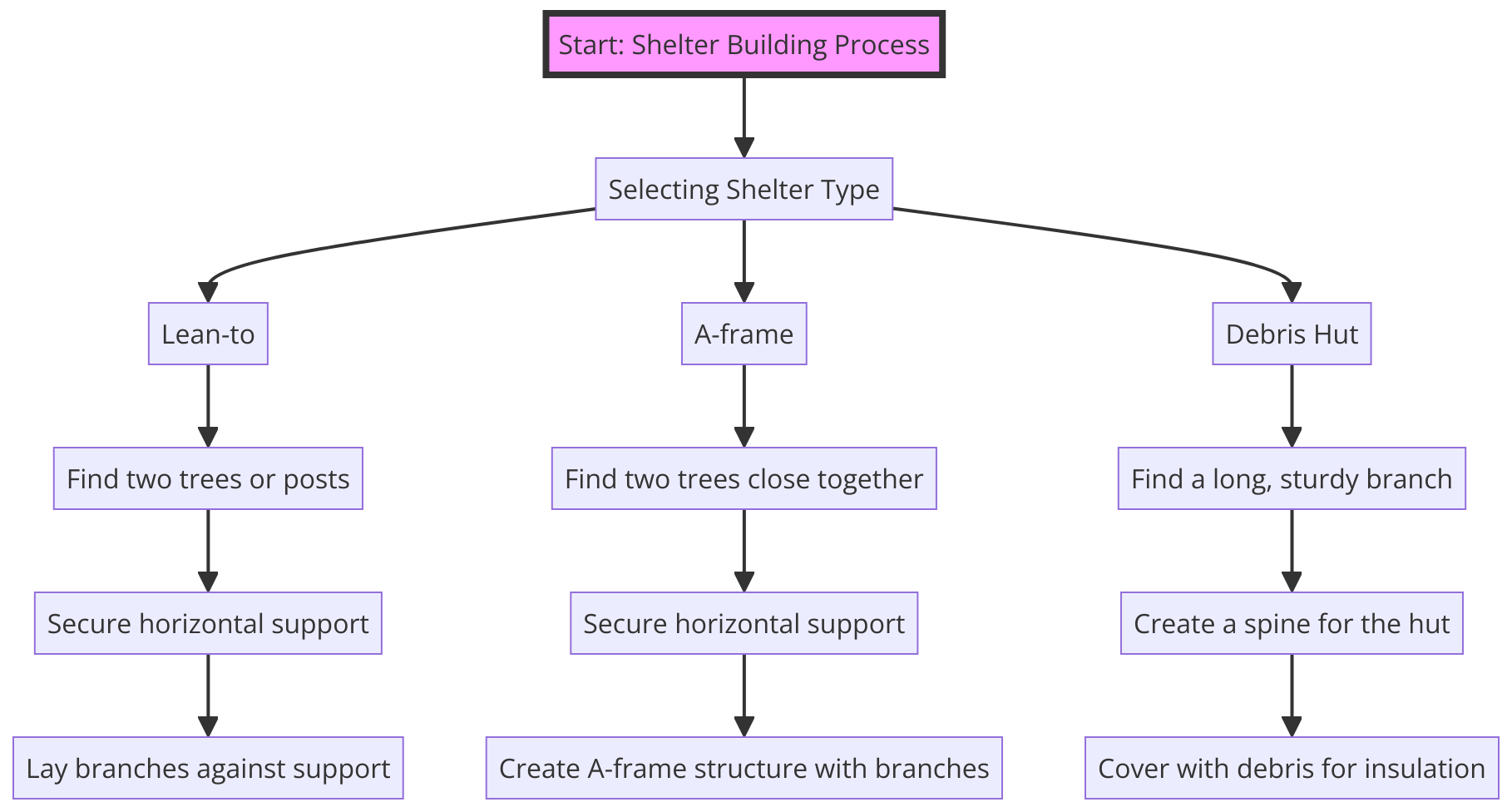
In a survival situation, a shelter provides protection from the elements, helps conserve body heat, and offers a sense of security.
| Material | Insulating Properties | Availability |
|---|---|---|
| Branches | Fair | Abundant |
| Leaves | Good | Abundant |
| Grass | Fair | Abundant |
| Moss | Excellent | Abundant |
| Bark | Fair | Abundant |
| Rocks | Poor | Abundant |
| Soil | Fair | Abundant |
To build a shelter, you’ll need to rely on your knowledge of essential bushcraft skills such as understanding the terrain, identifying suitable materials, and utilizing basic tools like an axe or bushcraft knife.
“In the wilderness, a well-constructed shelter isn’t just about comfort; it’s a vital barrier between you and the harsh elements,”
John Burdett, a seasoned bushcraft instructor with over 20 years of experience
The Importance of Gathering Tinder, Cordage, and Knot Knowledge
Before you set out to build a shelter, it’s essential to gather the necessary materials.
Tinder for starting a fire is crucial as it provides warmth, light, and a way to cook food.
Additionally, learning how to craft and use cordage is essential for constructing your shelter.
With basic knot knowledge, you can tightly secure branches and foliage, creating a sturdy structure that will withstand the elements.

2. Foraging for Food in the Wild

Bushcraft skills are essential for surviving in the wilderness, and foraging for food is one of the most crucial abilities to master.
When venturing into the wild, it’s vital to know how to procure sustenance from the environment around you.

Here are some tips to help you find nourishment amidst the wilderness:
1. Identify edible plants: Familiarize yourself with local flora and learn to distinguish between edible and poisonous plants. Look for key characteristics such as shape, color, and size. Remember to research and practice this skill before embarking on your journey.
| Edible Plant | Season of Availability | Nutritional Content | Warnings about Poisonous Plants |
|---|---|---|---|
| Dandelion | Spring, Summer | High in vitamins A, C, and K, iron, calcium, and potassium | Similar-looking plants, such as cat’s ear and hawksbeard, are toxic if consumed |
| Purslane | Spring, Summer | Rich in omega-3 fatty acids, vitamins A, C, and E, magnesium, potassium, and iron | Avoid confusion with spurge, which is toxic and can cause skin irritation or digestive issues |
| Nettles | Spring, Summer | High in vitamins A and C, iron, calcium, and protein | Stinging nettles must be cooked or dried to remove the stinging hairs |
| Wild Garlic | Spring, Summer | Contains vitamins A and C, calcium, and iron | Similar-looking plants, such as lily of the valley and autumn crocus, are toxic if ingested |
| Chickweed | Spring, Summer | Rich in vitamins A, C, and D, calcium, and magnesium | May be confused with poisonous plants like scarlet pimpernel or scarlet pimpernel |
2. Learn to hunt and trap: Acquiring protein-rich food is vital for survival. Mastering techniques such as setting up snares and traps can significantly improve your chances of catching game.
3. Utilize fishing and trapping: Bodies of water offer a wealth of food resources. Learning how to fish and trapcan help you secure a steady supply of protein.
4. Explore alternative food sources: In addition to plants and game, there are other food sources to consider. Insects, grubs, and larvae are rich in protein and can provide sustenance when other options are limited.
5. Use preparation techniques: Once you have collected food, it’s important to know how to prepare it properly. Cooking over a campfire or using a portable stove can help you remove bacteria and parasites, making the food safe to consume.
3. Finding Water in the Wilderness
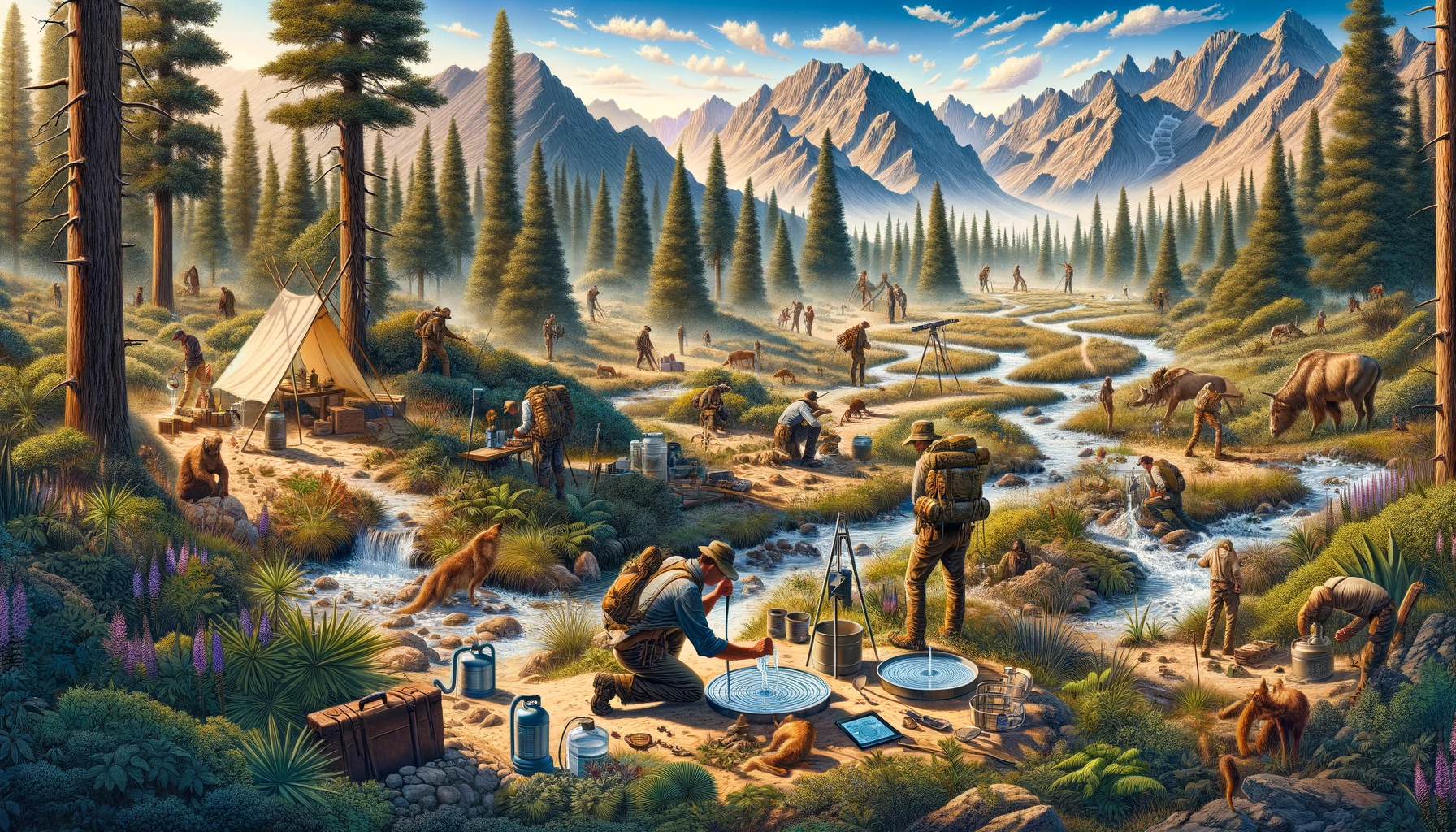
Importance of Water in the Wilderness
When you’re out in the wilderness, finding water is crucial for survival.
Without a doubt, water is an essential element that can literally save your life. In a survival situation, your body can only last a few days without water, making it one of the top skills you should know as a bush crafter.
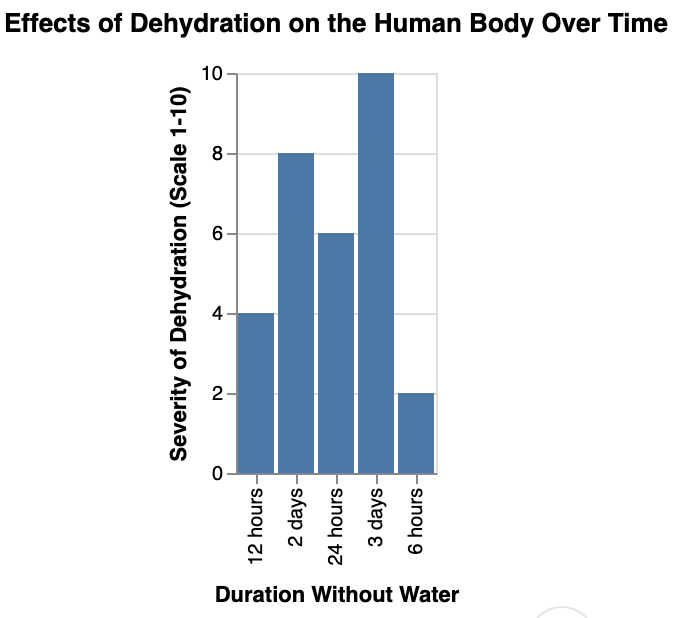
Techniques for Finding Water
- Scouting for natural sources: Begin by examining your surroundings for signs of water, such as wet ground, green vegetation, or animal tracks leading to a potential water source.
- Collecting dew: Place a piece of cloth or another absorbent material in an open area overnight to collect the dew that forms. Squeeze the cloth to extract the accumulated water.
- Condensation traps: Create a simple condensation trap by placing a plastic bag or sheet over a leafy branch. Secure the edges and wait for the sun to cause condensation inside the bag, which you can then collect.
- Water-rich plants: Identify and utilize certain water-rich plants, like cacti or thick-stemmed plants, for their liquid content.
- Digging for water: In areas with ample vegetation, dig a shallow hole a few feet away from a lean-to shelter. Wait for water to seep into the hole, which can then be collected.
- Water from vines: Learn to identify and use vines as a natural water source. By cutting a vine near its base and allowing water to flow, you can collect it in a container or drink directly.
- Rainwater collection: Utilize natural depressions in rocks or create your own water-catching structure to collect rainwater during storms.

“Water isn’t just a resource; in the wild, it’s your lifeline,”
Dr. Emily Waters, a survival research scientist
4. Mastery of Bushcraft Tools and Knives
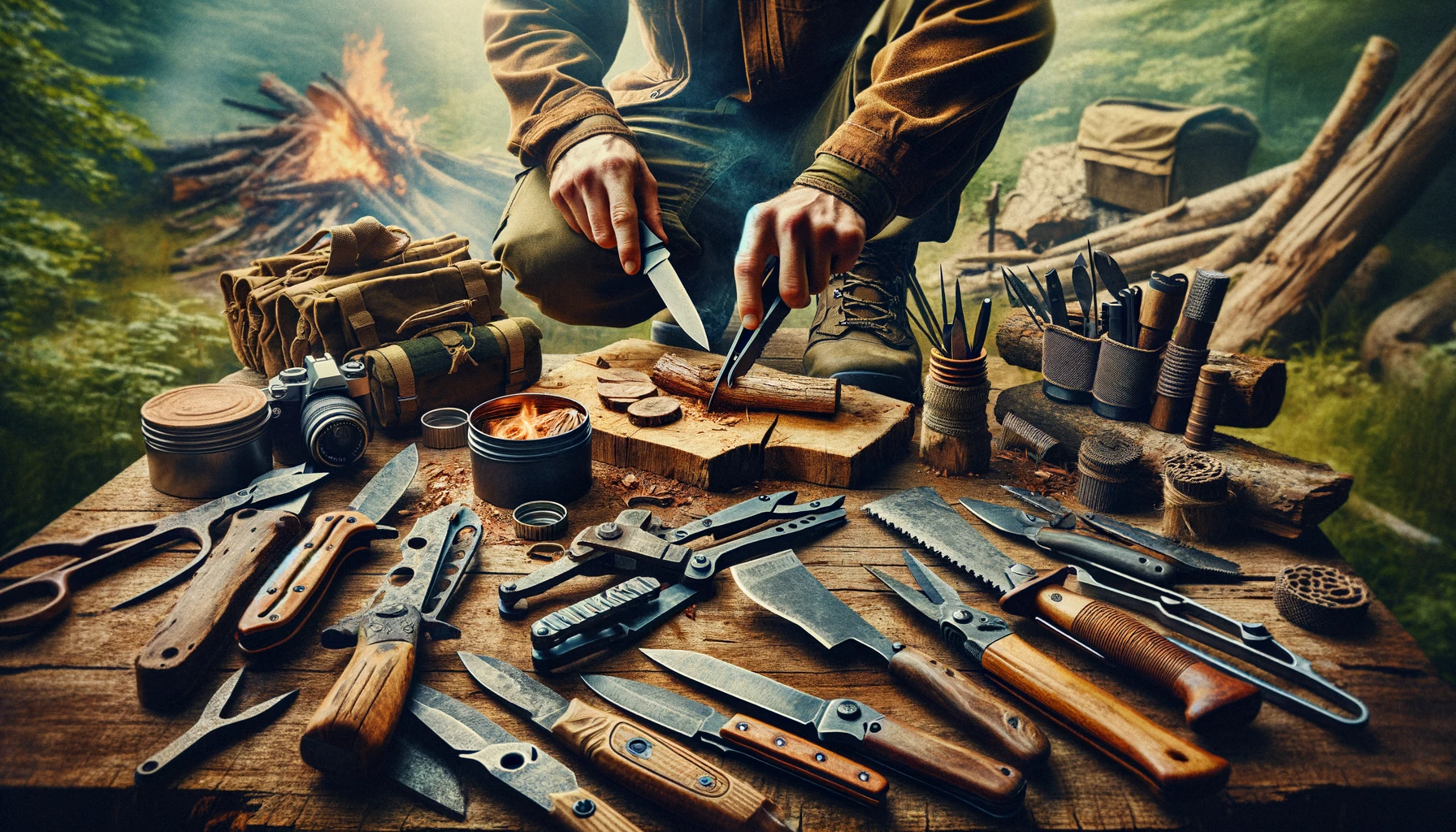
Basic Tools and Knives Skills You Should Master
When it comes to wilderness survival and the art of bushcraft, having a mastery of tools and knives is fundamental.
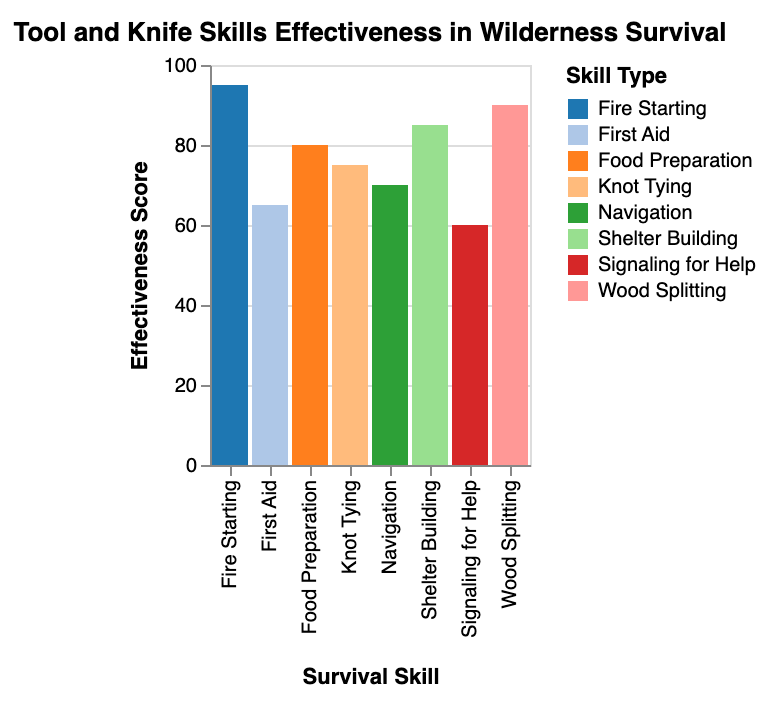
These tools are not only essential for tasks like building shelters and gathering firewood but also for self-defense and food preparation.
Bushcraft Knife:
A bushcraft knife is one of the most important tools to have in your arsenal.

It should be durable, versatile, and easy to handle. Look for a knife that has a high-quality blade made from carbon steel for durability and a strong grip for better control.
| Bushcraft Knife Model | Blade Length (inches) | Blade Material | Recommended Uses |
|---|---|---|---|
| Morakniv Companion | 4.1 | Stainless steel | Carving, slicing, general camp tasks |
| ESEE 4 | 4.5 | 1095 carbon steel | Batoning, feathering, light chopping |
| Benchmade Bushcrafter | 4.4 | CPM-S30V steel | Heavy chopping, batoning, carving |
| Helle Temagami | 4.3 | Triple laminated | Carving, detail work, skinning |
| Fallkniven F1 | 3.8 | VG-10 steel | Hunting, survival, general bushcraft tasks |
Bushcraft Axe:
Additionally, it’s crucial to learn how to properly use a bushcraft axe for tasks such as chopping wood, clearing brush, and even hunting.
This tool requires practice and skill, so it’s essential to invest time in learning and perfecting your axe skills.
Many resources, such as bushcraft books and online tutorials, can provide valuable insights and techniques to help you learn bushcraft and survive in the wilderness.
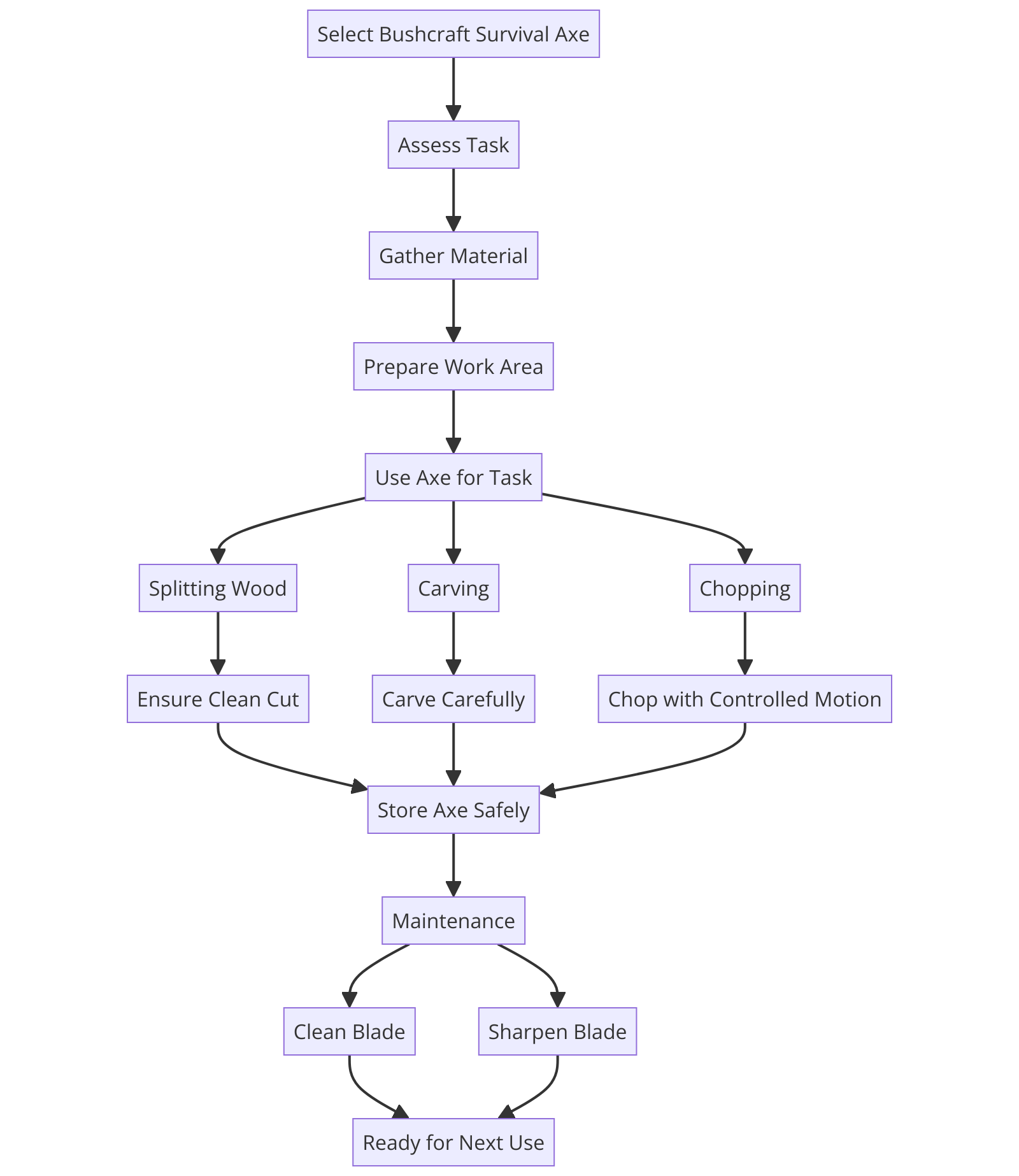
5. Essential Navigation Skills for Survival

Navigating in the Wilderness
Knowing how to navigate in the wild is an essential skill for survival in any bushcraft camp.
While relying solely on basic bushcraft tools and bushcraft gear is crucial, having the necessary skills and knowledge to find your way is equally important.
| Aspect | GPS Devices | Traditional Compass and Map |
|---|---|---|
| Accuracy | Provides precise location | Requires skill for accuracy |
| Ease of Use | User-friendly interface | Requires knowledge and practice |
| Speed | Quickly provides real-time location | May require more time for orientation |
| Reliability | Susceptible to signal loss | Reliable in any terrain |
| Battery Life | Limited by battery life | No battery reliance |
| Terrain | Works well in open areas | Works reliably in any terrain |
| Cost | Initial investment, possible subscription fees | One-time purchase, no ongoing costs |
| Emergency Navigation | May offer SOS features | Requires basic tools for navigation |
To successfully navigate through the wilderness, you should first know how to build and recognize various natural landmarks and use them as reference points.
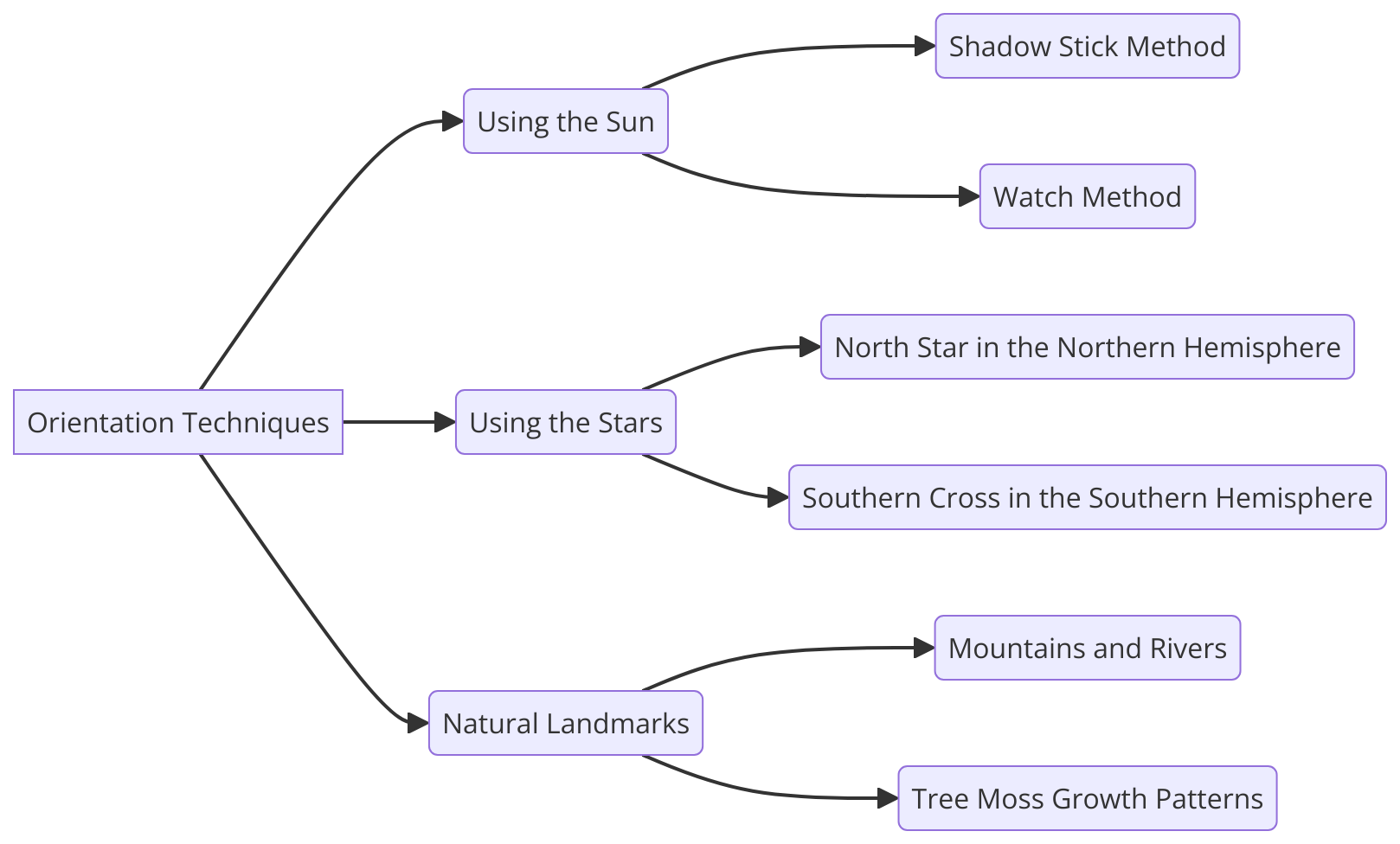
Familiarize yourself with wild plants and related skills, such as map reading, compass usage, and understanding terrain features.
Additionally, identifying a reliable water source and understanding how to obtain clean water is crucial in any survival situation.
6. Crafting and Using Cordage and Knots
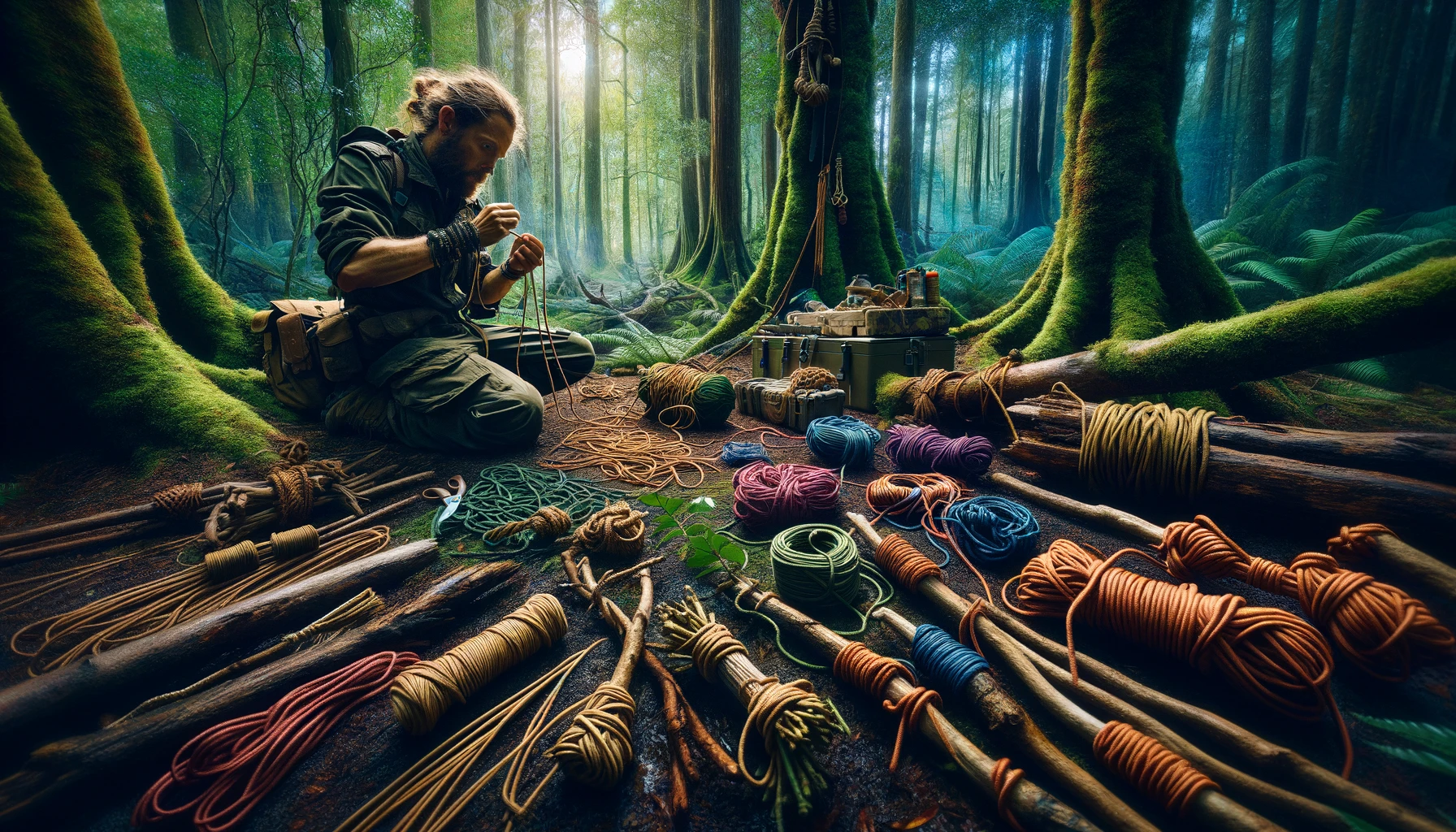
Learning Bushcraft Survival Skills
In the wild, mastering the art of crafting and using cordage and knots is necessary for survival.
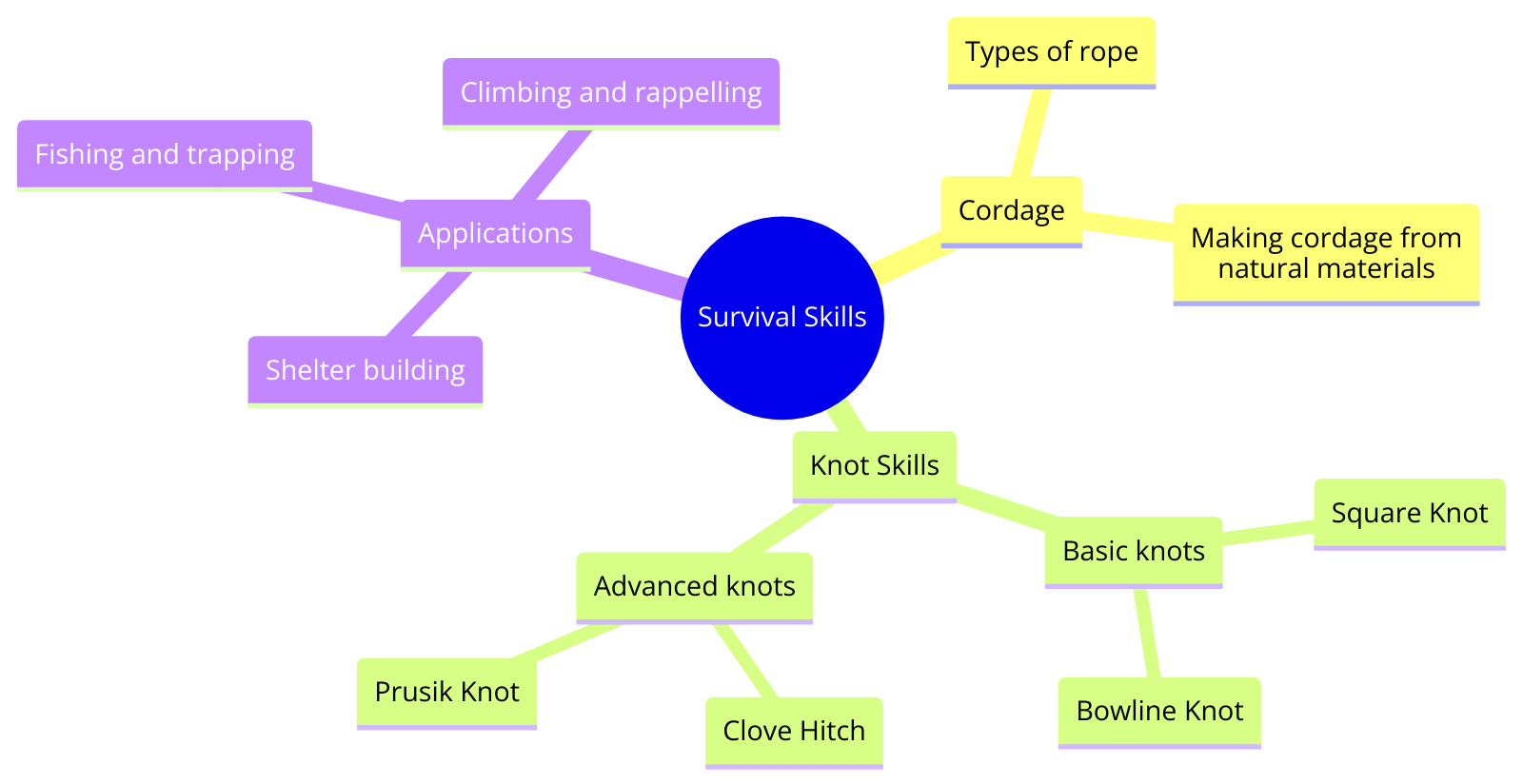
These skills play a crucial role in various aspects of bushcraft, from building effective shelters to securing food and resources.
Your bushcraft fire-building skills and foraging skills will be greatly enhanced by the ability to create strong and reliable cordage and tie secure knots.
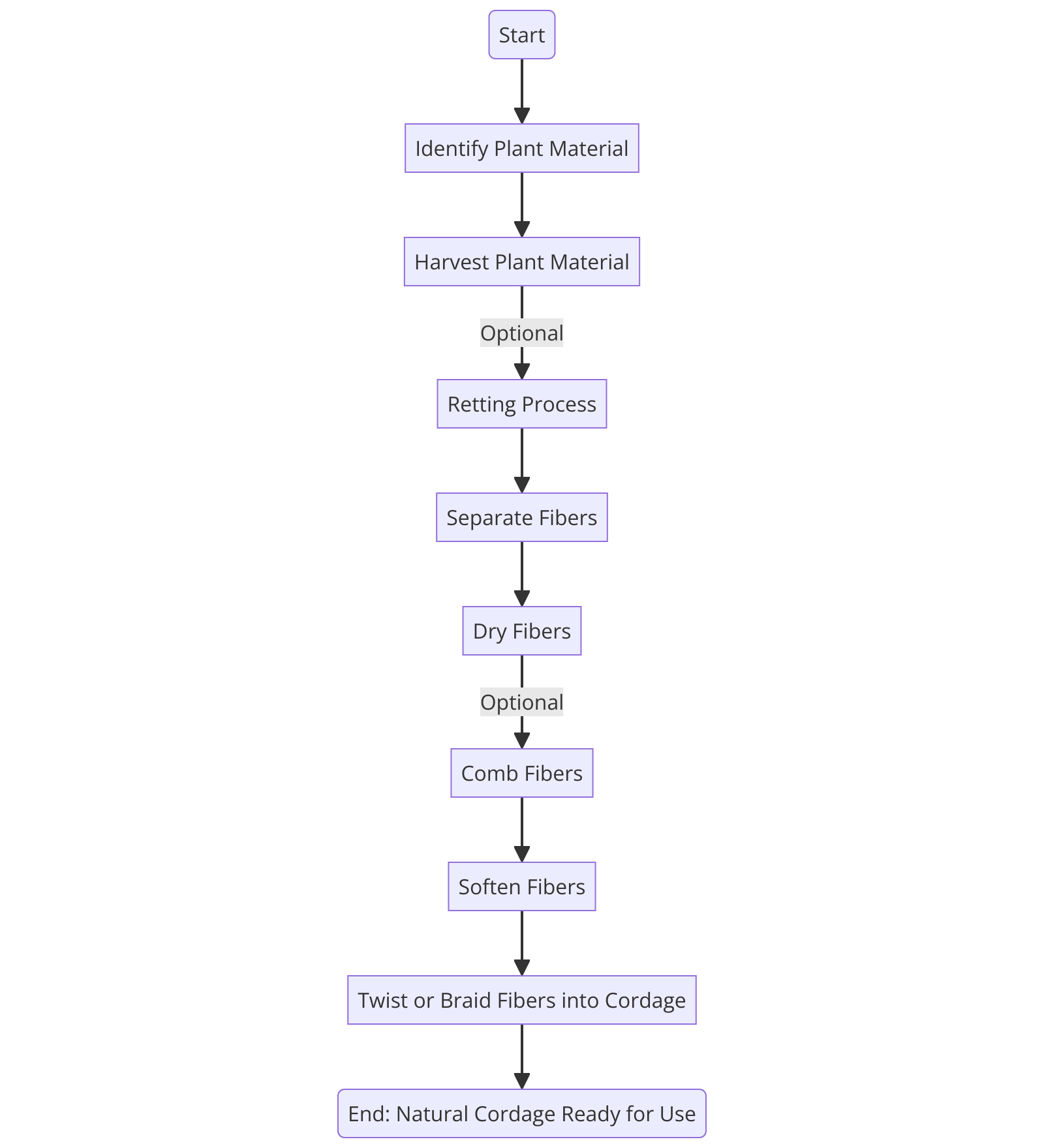
The Essential Set of Skills and Tools
To become proficient in cordage and knot craft, you’ll need a few essential tools.
One such tool is a folding saw, which allows you to harvest suitable materials for cordage.
Additionally, a stout knife or multitool, like a Swiss Army knife, will be invaluable for cutting and shaping fibers.
| Bushcraft Tool | Specific Uses | Tips for Selection |
|---|---|---|
| Folding Saw | Cutting wood for shelter, firewood, etc. | Look for sharp blade, secure locking mechanism |
| Awl | Punching holes, sewing, making repairs | Sturdy handle, sharp point |
| Ferro Rod | Igniting fires for warmth, cooking, signaling | Large striker, durable handle |
| Paracord | Securing shelters, repairs, snares, etc. | High-quality, military-grade, strong and durable |
| Multi-tool | Cutting, gripping, screwing, various tasks | Essential functions, durable construction |
| Folding Shovel | Digging, fire pits, clearing debris, etc. | Compact, lightweight, durable blade, folding design |
| Compass | Navigation, orientation in wilderness | High-quality, clear dial, sturdy construction |
| Whistle | Signaling for help, communication | Loud, clear sound, weather-resistant construction |
With these skills and tools, you can create various types of cordage using natural materials, such as plant fibers or animal sinew.
Mastering the art of tying different knots – from simple ones like the square knot to more complex ones like the clove hitch– will give you the ability to secure gear, build structures, and even fashion snares for trapping.
7. Creating and Managing a Campfire
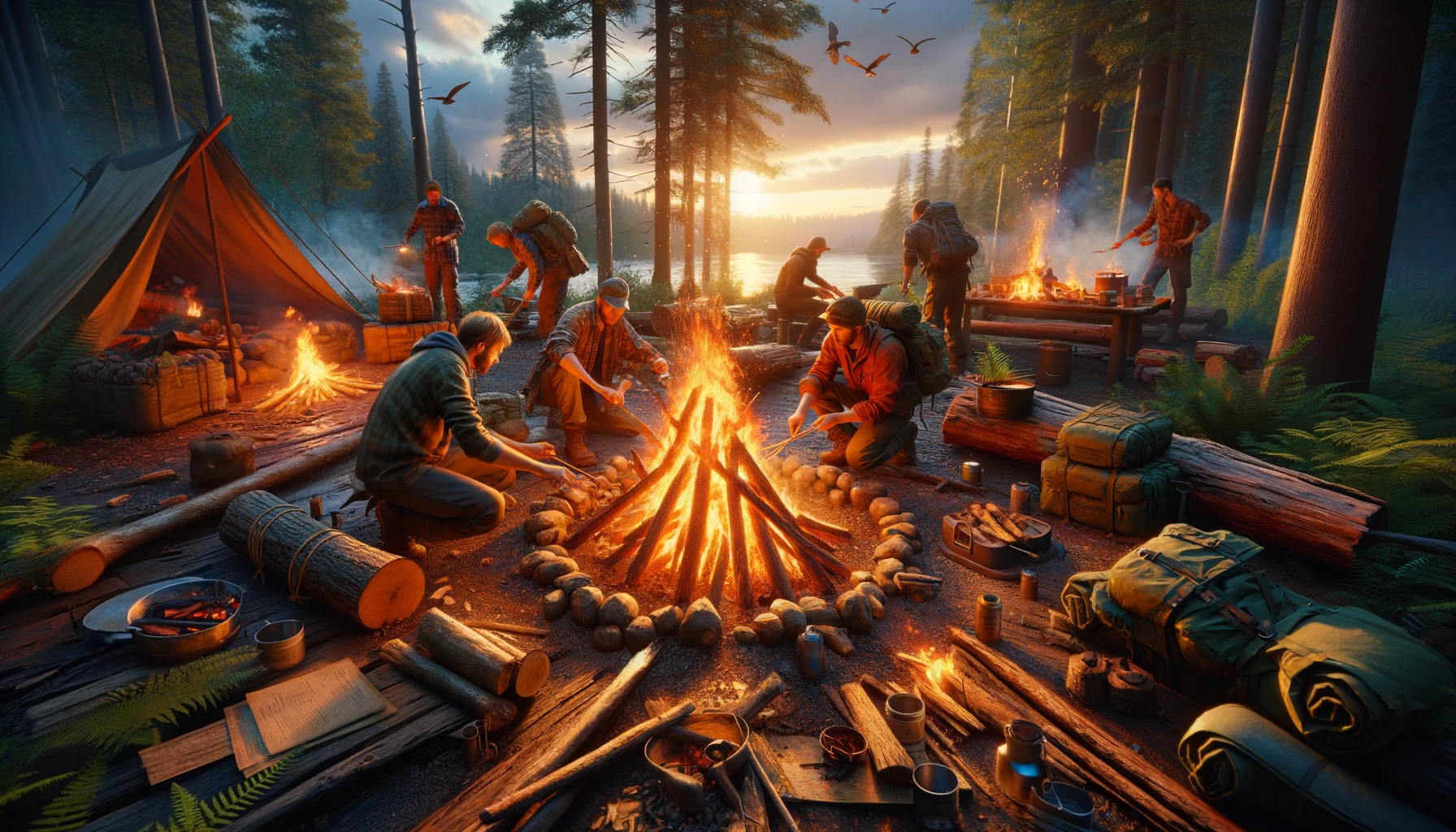
Skill to Practice: Fire Starting
One of the most typical bushcraft skills to practice is fire starting.
In the wilderness, a reliable and well-maintained campfire can mean the difference between a comfortable night and a miserable one.
Not only does a campfire provide warmth and light, but it also offers a sense of security and can be used for cooking food and boiling water.
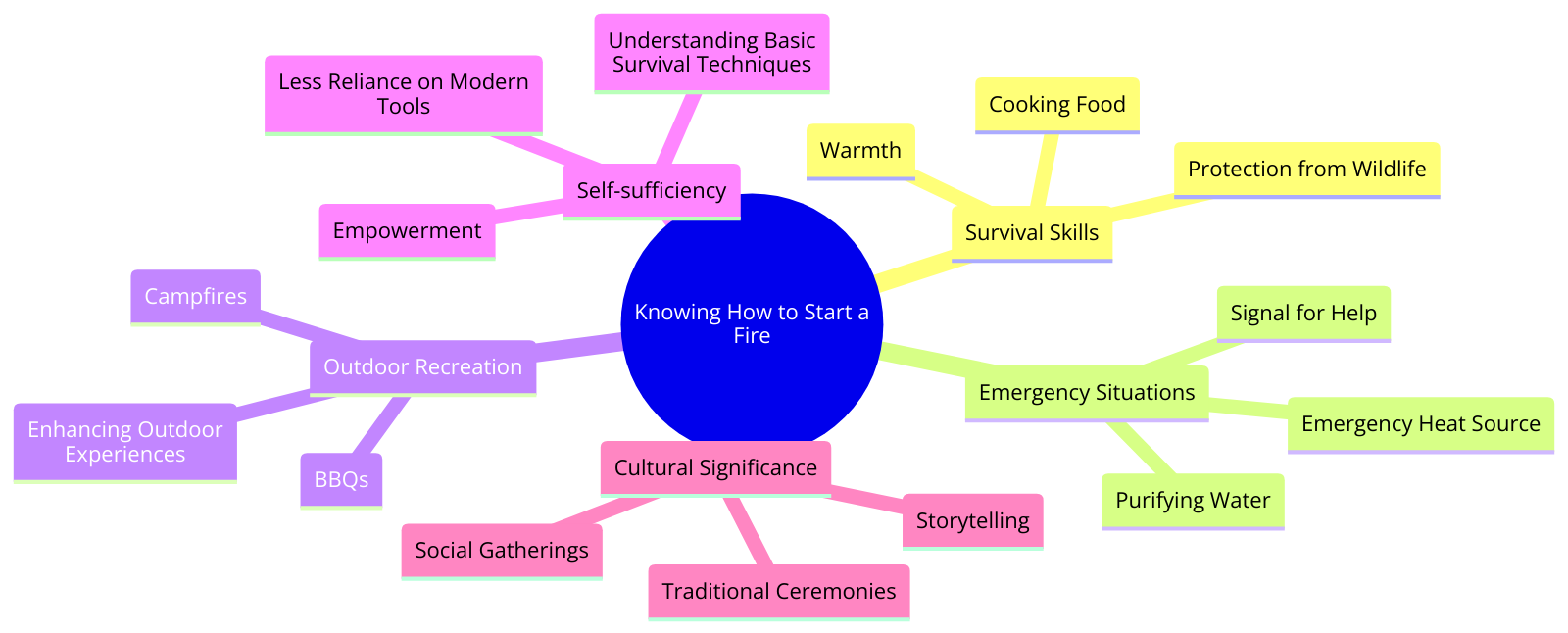
Useful Bushcraft Tips for Fire Management
Once you’ve got a fire started, it’s important to know how to manage and maintain it properly.
A crucial aspect is gathering enough firewood to ensure a steady supply of fuel throughout the night.
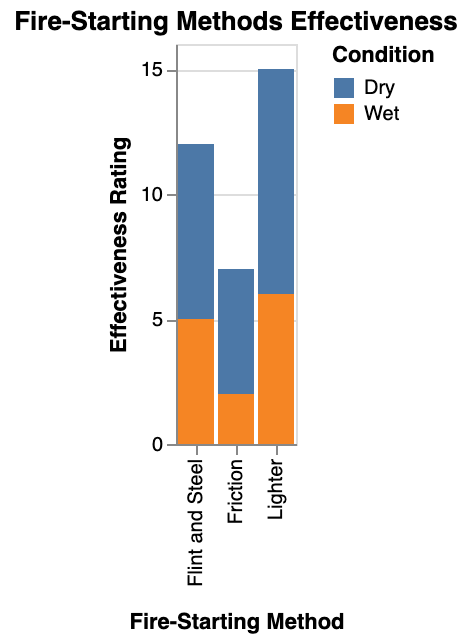
Look for dead branches on the ground or low-hanging ones within reach, as they are usually dry and flammable.
| Type of Wood | Heat Output | Smoke Production | Ease of Ignition |
|---|---|---|---|
| Oak | High | Low | Moderate |
| Maple | High | Low | Moderate |
| Birch | High | Low | Easy |
| Pine | Medium | Medium | Easy |
| Cedar | Medium | Low | Easy |
| Apple | High | Low | Moderate |
| Cherry | High | Low | Moderate |
| Hickory | High | Low | Moderate |
To keep you dry, create a fire reflector by stacking rocks behind the fire to redirect heat towards you.
Additionally, positioning your sleeping area near a fire will provide additional warmth and protection from wildlife.
8. Water Sourcing and Purification Techniques
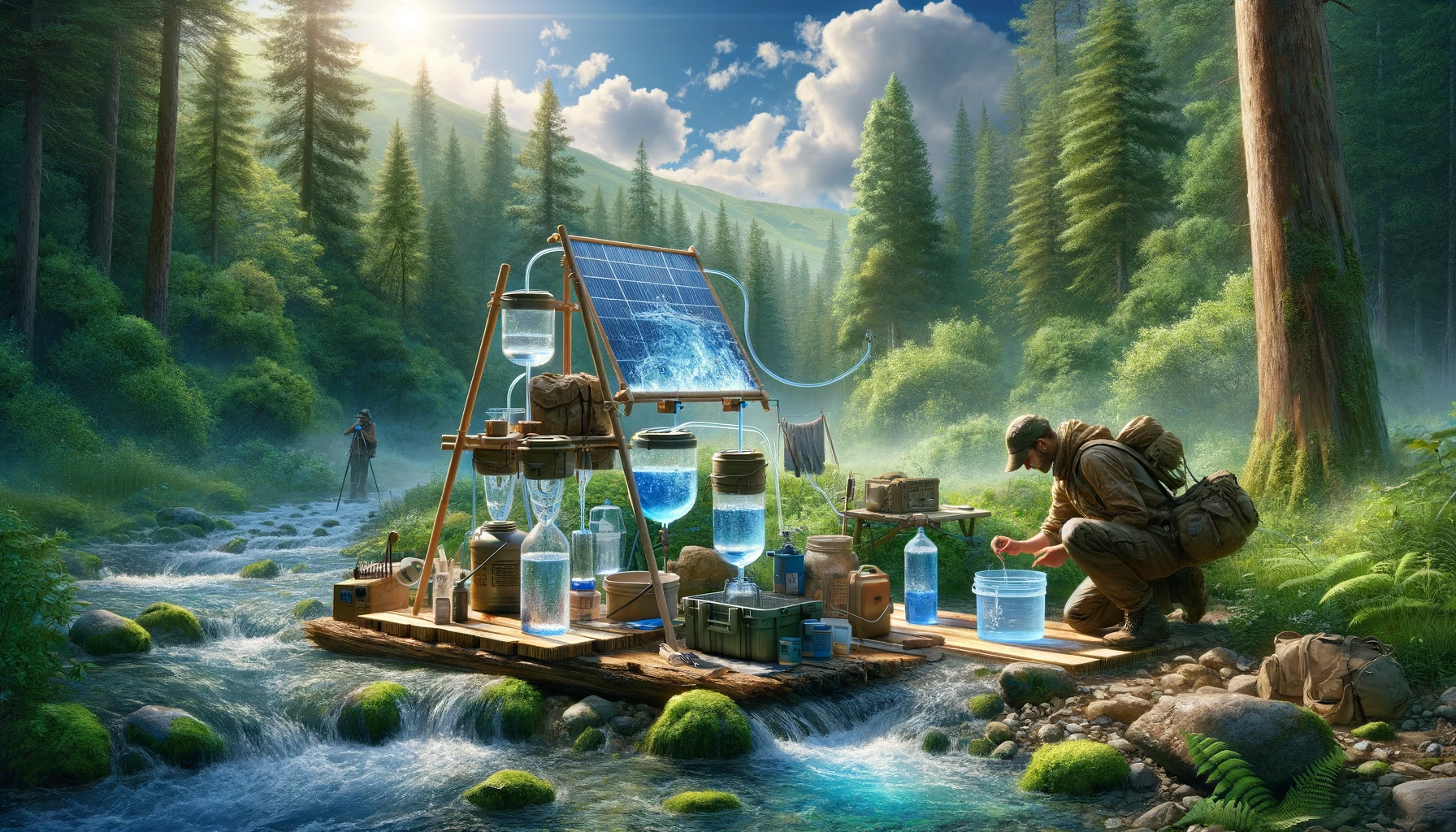
Water Sources in the Wilderness
When you’re out in the wild, finding a reliable source of water is crucial for your survival.
It’s important to explore your surroundings and be aware of potential water sources nearby.
Look for natural indicators such as lush vegetation, which may indicate the presence of a water source.
You can also keep an eye out for animal tracks or signs of wildlife, as animals tend to congregate around water sources.

Purification Techniques: Skill and Practice
Water purification in the wilderness requires practice and skill.
One such technique is boiling water. Boiling water kills harmful bacteria and pathogens, making it safe to drink.

Practice building a campfire and using it to boil water effectively.
Another important technique to master is using portable water filters and purifiers.
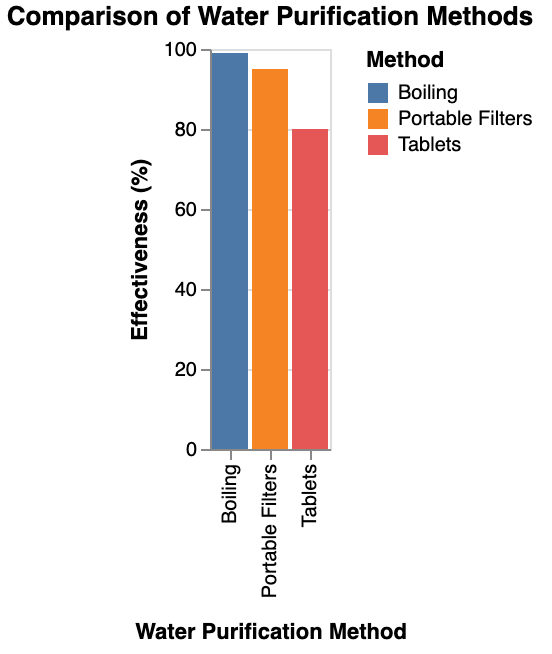
| Purification Method | Effectiveness | Time Required | Practical Tips |
|---|---|---|---|
| Boiling | Highly effective | 5 minutes boiling | Bring water to rolling boil, let cool before drinking |
| Filters | Effective | Varies | Follow manufacturer’s instructions, carry backup |
| Chemical Treatment | Effective | 30 min – 4 hours | Use recommended dosage, mix thoroughly, use as backup |
These handy tools can remove bacteria, sediment, and other impurities from water, but be sure to practice with ferro rods to start your fire for boiling or to prepare your water for purification using other methods.
FAQ:
What are some essential bushcraft skills you should know for survival?
Some essential bushcraft skills for survival include building a shelter, starting a fire using primitive methods like a bow drill, foraging for food, purifying water, and navigating using natural landmarks.
How can axe skills help you survive in the wilderness?
Axe skills are crucial for tasks like chopping wood for fire, building shelters, and crafting tools for survival. They also aid in processing materials for constructing traps and signaling for help.
What is the significance of practicing with ferro rods in bushcraft?
Practicing with ferro rods helps bushcrafters master the technique of generating sparks to start fires in all weather conditions. It is a reliable and essential skill for survival in the outdoors.
Why is shelter building important in bushcraft and survival situations?
Shelter building is vital in bushcraft and survival as it provides protection from the elements, preserves body heat, and increases the chances of survival in harsh environments.
How can developing foraging skills benefit you in a survival scenario?
Developing foraging skills enables you to identify edible plants, berries, and mushrooms in the wild, supplementing your food supply in survival situations where other resources might be scarce.
What is the role of ferro rods in building a bushcraft fire?
Ferro rods are commonly used in bushcraft for creating hot sparks that ignite tinder, making them a reliable tool for starting fires without the need for matches or lighters.
Why are outdoor skills essential for anyone wanting to learn bushcraft?
Outdoor skills are fundamental for anyone interested in learning bushcraft as they cover a range of techniques including navigation, shelter building, fire starting, foraging, and water purification – all crucial for wilderness survival.
More Resources:
- Bushcraft Explorer offers a comprehensive guide on selecting the right location, gathering materials, and the step-by-step process of building various types of shelters. Read more at Bushcraft Explorer.
- Mortonsonthemove dives into the essentials of survival shelter building in the wilderness, emphasizing the importance of planning and selecting suitable materials. Discover more at Mortonsonthemove.
- Survival Stoic elaborates on the various types of bushcraft and survival shelters, providing insights into choosing the appropriate shelter based on your needs and available resources. Explore Survival Stoic.
- Survival World discusses the significance of selecting the best location for a shelter, highlighting factors such as elevation, wind direction, and proximity to water sources. Learn more at Survival World.
- Bushcraft Base Camp offers a detailed guide on choosing the right location, materials, and tools needed to build a shelter, including steps to construct a frame, insulate, and waterproof your bushcraft shelter. Read further at Bushcraft Base Camp.


